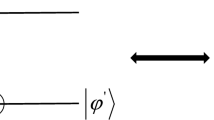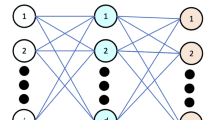Abstract
Network attack may have a serious impact on network security. With the rapid development of quantum machine learning, variational quantum neural network (VQNN) has demonstrated quantum advantages in classification problems. The intrusion detection system (IDS) based on quantum machine learning has higher accuracy and efficiency than the IDS based on traditional machine learning. In this work, we propose a intrusion detection scheme based on VQNN, which is composed of variational quantum circuit (VQC) and classical machine learning (ML) strategy. In order to verify the effectiveness of the scheme, we used the VQNN model and some classic ML models (Such as artificial neural network, support vector machines, K-Nearest Neighbors, Naive Bayes, decision tree) to conduct comparative experiments. The results indicate that the proposed IDS model based on VQNN has a 97.21% precision, which is higher than other classic IDS models. Furthermore, our VQC can be deployed on the overwhelming majority of recent noisy intermediate-scale quantum machines (such as IBM). This research will contribute to the construction of general variational quantum framework and experimental design and highlight the potential hopes and challenges of hybrid quantum classical learning schemes.












Similar content being viewed by others
References
Ukita J (2020) Causal importance of low-level feature selectivity for generalization in image recognition. Neural Netw 125:185–193
Gong C, Du J (2020) Grover algorithm-based quantum homomorphic encryption ciphertext retrieval scheme in quantum cloud computing. Quantum Inf Process 19(3):105
Gong C, Shi T (2020) An improved quantum genetic algorithms and application for ddos attack detection. In: 2019 IEEE International Conference on Parallel and Distributed Processing with Applications, Big Data and Cloud Computing, Sustainable Computing and Communications, Social Computing and Networking (ISPA/BDCloud/SocialCom/SustainCom)
AruteF BR, Arya K (2019) Quantum supremacy using a programmable superconducting processor. Nature 574(7779):505–510
Kak SC (1995) Quantum neural computing. Syst Control Inf 52(3–4):143–160
Li P, Li S (2008) Learning algorithm and application of quantum bp neural networks based on universal quantum gates. J Syst Eng Electron 19(1):167–174
Patrick R, Thomas B, Christian W, Seth L (2018) Quantum hopfield neural network. Phys Rev A 98(4):042308
Leonardo B, Nicola P, Sougato B (2016) Quantum gate learning in qubit networks: toffoli gate without time-dependent control. npj Quantum Inf 2:16019
P J (2018) Quantum computing in the nisq era and beyond. Quantum 2:79
Jiang Z, Zhihui W, Rieffel EG (2017) Near-optimal quantum circuit for Grover's unstructured search using a transverse field. Phys Rev A 95(6):62317
Huang C, Newman M SM (2020) Explicit lower bounds on strong quantum simulation. IEEE Trans Inf Theory 69:5585–5600
Cintas Canto A, Kermani MM, Azarderakhsh R (2021) Reliable architectures for composite-field-oriented constructions of McEliece post-quantum cryptography on FPGA. IEEE Trans Comput Aided Des Integr Circuits Syst 40:999–1003
Wei AY, Wea HA, Naik P (2020) Quantum algorithms for jet clustering. Phys Rev D 101:94015
Qiu P-H, SY M, Chen XG (2019) Detecting entanglement with deep quantum neural networks. IEEE Access 7:94310–94320
Xia RKS (2020) Hybrid quantum-classical neural network for calculating ground state energies of molecules. Entropy 22:828
VerteletskyiV IAF, Yen TC (2020) Measurement optimization in the variational quantum eigensolver using a minimum clique cover. J Chem Phys 152:124114
PepperA PGJ, Tischler N (2019) Experimental realization of a quantum autoencoder: the compression of qutrits via machine learning. Phys Rev Lett 122:60501
Zhou L, Sea C, Wang ST (2020) Quantum approximate optimization algorithm: performance, mechanism, and implementation on near-term devices. Phys Rev X 10:21067
Cong I, Choi LMDS (2019) Quantum convolutional neural networks. Nat Phys 15:1273–1278
Dubosq C, Calvo RMEAF (2020) Quantum modeling of the optical spectra of carbon cluster structural families and relation to the interstellar extinction uv bump. Astromy Astrophyscs 634:13
YanyingLiang WP, Zhu-JunZheng OS, Zhao G (2021) A hybrid quantum-classical neural network with deep residual learning. Elsevier, New York
SteveAbel JCC, Spannowsky M (2022) Completely quantum neural networks. CoRR
Yevhenii T, SergiiStirenko OROAEP, Gordienko Y (2021) Hybrid classic-quantum neural networks for image classification. In: The 11th IEEE International Conference on Intelligent Data Acquisition and Advanced Computing Systems: Technology and Applications
JunQi CHHY, Chen P (2021) Qtn-vqc: an end-to-end learning framework for quantum neural networks. CoRR
Jiang W, Xiong J, Shi Y (2020) Can quantum computers learn like classical computers? a co-design framework for machine learning and quantum circuits. arXiv:2006.14815
Li P, Wang B (2020) Quantum neural networks model based on swap test and phase estimation. Neural Netw 130:152–164
Kerstin B, Dmytro B, Terry F, J OT, Robert S, Ramona W (2019) Efficient learning for deep quantum neural networks. arXiv:1902.10445
Havlíček V, Córcoles AD, Temme K, Harrow AW, Kandala A, Chow JM, Gambetta JM (2019) Supervised learning with quantum-enhanced feature spaces. Nature 567(7747):209–212
McClean JR, Boixo S, Smelyanskiy VN, Babbush R, Neven H (2018) Barren plateaus in quantum neural network training landscapes. Nat Commun 9(1):1–6
Qiu P-H, Chen X-G, Shi Y-W (2019) Detecting entanglement with deep quantum neural networks. IEEE Access 7:94310–94320
Kdd cup 1999 dataset. http://kdd.ics.uci.edu/databases/kddcup99/kddcup99.html
Khalvati L, Keshtgary M, Rikhtegar N (2018) Intrusion detection based on a novel hybrid learning approach. Nat Commun 6(1):157–162
Liu J, Zhang W, Tang Z, Xie Y, Ma T, Zhang J, Zhang G, Niyoyita JP (2020) Adaptive intrusion detection via ga-gogmm-based pattern learning with fuzzy rough set-based attribute selection. Expert Syst Appl 139:112845
Aljawarneh S, Aldwairi M, Yassein MB (2018) Anomaly-based intrusion detection system through feature selection analysis and building hybrid efficient model. J Comput Sci 25:152–160
Mohammadi S, Mirvaziri H, Ghazizadeh-Ahsaee M, Karimipour H (2019) Cyber intrusion detection by combined feature selection algorithm. J Inf Secur Appl 44:80–88
Alazzam H, Sharieh A, Sabri KE (2020) A feature selection algorithm for intrusion detection system based on pigeon inspired optimizer. Expert Syst Appl 148:113249
Sim S, Johnson PD, Aspuru-Guzik A (2019) Expressibility and entangling capability of parameterized quantum circuits for hybrid quantum-classical algorithms. Adv Quantum Technol 2:1900070
Yen-Chi Chen S, Huck Yang CH, Qi J, Chen PY, Ma X, Goan HS (2020) Variational quantum circuits for deep reinforcement learning. IEEE Access 8:141007–141024
Acknowledgements
This work was funded in part by the Liaoning Provincial Department of Education Research under Grant LJKZ0208, in part by the Scientific Research Foundation for Advanced Talents from Shenyang Aerospace University under Grant 18YB06, and National Basic Research Program of China Under Grant JCKY2018410C004.
Author information
Authors and Affiliations
Corresponding author
Additional information
Publisher's Note
Springer Nature remains neutral with regard to jurisdictional claims in published maps and institutional affiliations.
Rights and permissions
About this article
Cite this article
Gong, C., Guan, W., Gani, A. et al. Network attack detection scheme based on variational quantum neural network. J Supercomput 78, 16876–16897 (2022). https://doi.org/10.1007/s11227-022-04542-z
Accepted:
Published:
Issue Date:
DOI: https://doi.org/10.1007/s11227-022-04542-z




